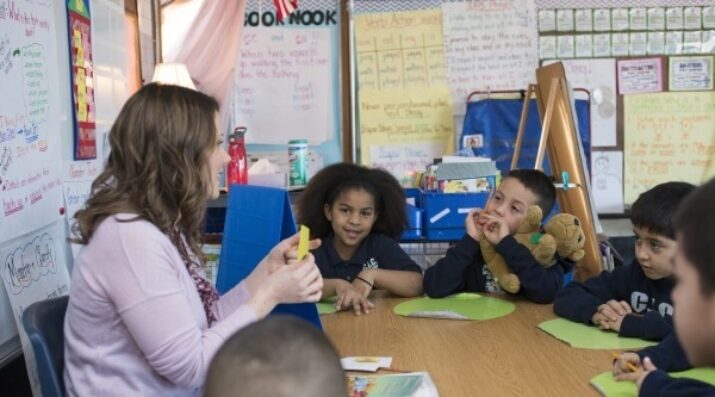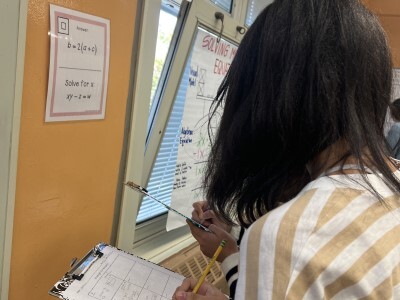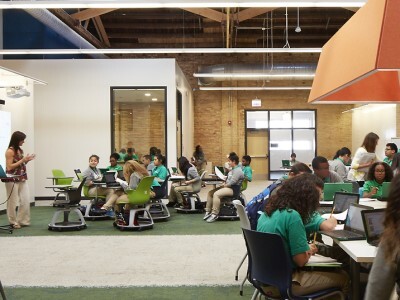Integrating Computational Thinking into ELA Classrooms
Topics

We’ve all had the experience of truly purposeful, authentic learning and know how valuable it is. Educators are taking the best of what we know about learning, student support, effective instruction, and interpersonal skill-building to completely reimagine schools so that students experience that kind of purposeful learning all day, every day.
Computational thinking supports core literacy goals like organizing ideas, identifying patterns, and building arguments, without requiring extra English Language Arts instruction.
When Digital Promise began partnering with New York City educators to explore computational thinking (CT) integration in literacy instruction, we encountered a common sentiment: “What does computational thinking have to do with English Language Arts?”
This reflects a broader challenge in integrating computer science education into core subject areas, suggesting a longstanding gap in resources bridging computational thinking to less common integration areas such as English Language Arts (ELA). Educators often have demanding responsibilities while navigating competing priorities, leaving little space to consider the potential of computational thinking. This is especially true of elementary ELA and early literacy, where the stakes have grown considerably higher over the past few years related to the science of reading and ensuring youth have the necessary skills to effectively read and write. Our collaborative work with educators and principals across Harlem and the Bronx has shown that computational thinking doesn’t have to burden literacy instruction, but rather can enhance it.
Designing with Teachers, Not for Them
At Digital Promise, including educators in participatory design has been instrumental. Rather than delivering pre-packaged resources, we partnered with seven elementary ELA teachers to co-create resources integrating computational thinking into their current practices. We deeply listened to persistent classroom challenges including students struggling to synthesize a passage or translate their thoughts to writing. Ultimately, we saw an opportunity to leverage computational thinking to support underlying thinking skills within these challenges.
Clarifying What Computational Thinking Really Is (and Isn’t)
At Digital Promise, we define computational thinking as a problem-solving process grounded in key skills: decomposition, pattern recognition, abstraction, and algorithmic thinking. It’s not just about coding and it’s certainly not just for STEM.
However, we aim to avoid diluting computational thinking down to generalized problem solving, losing its grounding in computing. We want to stay true to its applications in computer science while making it meaningful for all educators.
The Power of Routines
We ended up designing computational thinking routines, building off the concept of thinking routines from Project Zero at Harvard. These are repeatable, metacognitive moves that help students map and externalize their thinking. The goal is to also have a shared language that learners and educators can transfer across grade levels and content areas.
One example is a routine infusing computational thinking skills we developed called B.O.A.T.:
- Brainstorm
- Organize
- Abstract
- Transform
For a fifth-grade writing task, this might guide students through developing and refining an opinion piece. By creating anchor charts, lesson plans, and visuals tied to each routine, we made it easier for teachers to embed computational thinking into their existing curriculums.
Supportive Resources
Integrating computational thinking into core subject areas such as ELA is one method of increasing equity in computer science education, particularly for historically and systematically excluded learners. These routines were designed to be adaptable, illustrating how integration can enhance subject-area learning while also broadening access to develop crucial skills for an increasingly digital world.
Listen: Computational Thinking and Early Literacy
NGLC is grateful for our collaboration and partnership with EDU Café Podcast that brings fresh voices and insights to the blog. Listen to the EDU Café episode where Digital Promise's Dr. Quinn Burke, Dr. Sharin Jacob, and Keun-woo Lee discuss the integration of computational thinking and literacy in education, particularly for young learners.
Read More
Literacy and Computational Thinking for Young Learners - Sharin Jacob, Digital Promise
Using computational thinking routines in elementary English Language Arts (ELA) deepens literacy practices for all students and can be especially helpful for multilingual learners.
Developing Students’ AI Literacy and Data Science Skills with Computational Thinking - Quinn Burke, Keun-woo Lee, and Sharin Jacob, Digital Promise
Computational thinking routines teach concepts like abstraction, decomposition, and algorithms—across the curriculum—building a foundation for AI literacy and data science skills.
This article originally appeared on the Digital Promise blog on July 15, 2025. Photo at top courtesy of Distinctive Schools.




